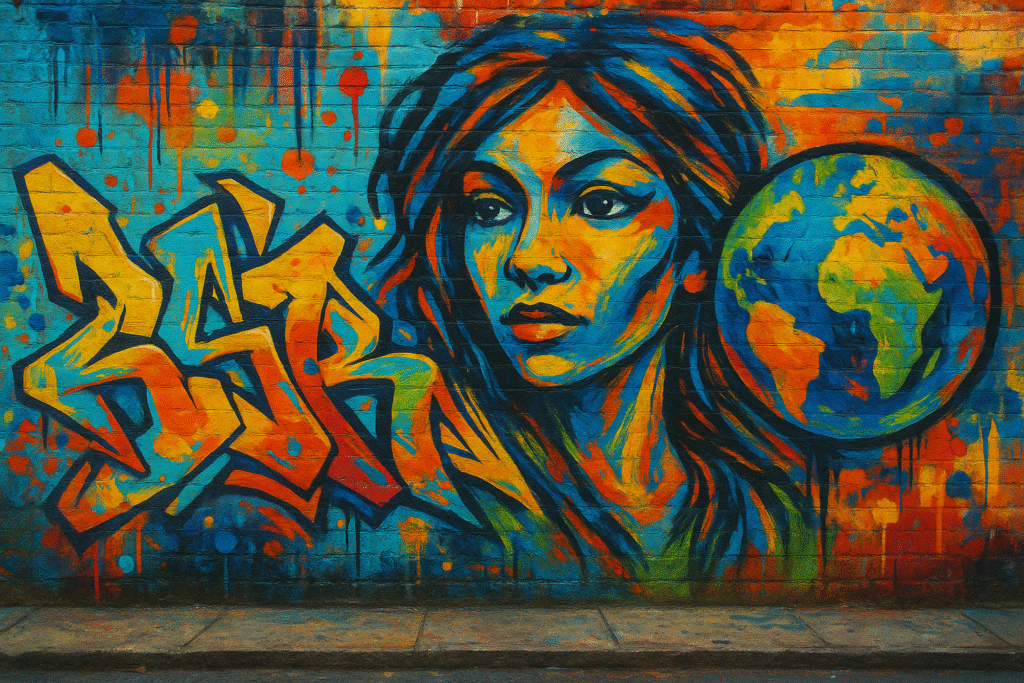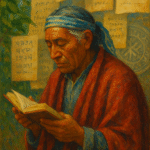Street art has emerged as more than just vibrant graffiti; it has become a powerful international dialect of cultural expression and social commentary. This dynamic form of art is not confined by geographical boundaries, instead conveying messages that resonate with diverse audiences around the globe.
What Is Street Art? Understanding Urban Expression
Street art is any visual art produced in public spaces, often unsanctioned, with styles ranging from graffiti tags to large-scale murals. This form of urban expression is characterized by its accessibility and its ability to convey messages that challenge societal norms (Source).
The Origins and Evolution of Street Art Culture
Street art originated in urban landscapes of the late 20th century as a form of rebellion and a voice for marginalized communities. From its early graffiti roots, it has grown into a worldwide phenomenon, continuously challenging and influencing societal conversations (Source).
How Street Art Became a Global Language
The Power of Visual Storytelling
Street art breaks cultural barriers through visual storytelling, with symbols and imagery that are universally understood. Iconic artists, like Banksy, use art as activism, addressing themes such as politics and societal issues (Source).
Inspiration from Global Urban Art Trends
Street art is a tapestry of various styles, influenced by global urban art trends. Artists across different cultures collaborate, sharing stories, traditions, and issues that are relevant to their local communities. This interconnectedness promotes understanding and unity (Source).
Transformative Initiatives: Community Mural Projects
Community Engagement through Art
Community mural projects illustrate how street art can strengthen neighborhood connectivity, beauty, and identity. These artistic endeavors allow local communities to express their shared stories and struggles, fostering a sense of belonging (Source).
Spotlight on Successful Urban Art Initiatives
Initiatives in cities like Philadelphia and Detroit have demonstrated the transformational power of street art. Collaborations with local artists have turned unused spaces into vibrant canvases reflecting community heritage and dreams (Source).
Digital Street Art: Bridging Physical and Virtual Worlds
The Evolution of Street Art in the Digital Era
Digital platforms and social media have allowed street art to transcend physical barriers, enabling artists to share their creations globally. This digital shift has introduced innovative techniques and a new dimension to this art form (Source).
Impact on Street Art Festivals 2023
Street art festivals in 2023 exemplify the blend of traditional and digital art forms. These events provide platforms for artists to showcase collaborative works, engage audiences, and explore contemporary art’s evolving landscape (Source).
Concluding Thoughts: The Future of Street Art as a Language
Street art continues to be a testament to universal human experiences, fostering connections across global communities. Its innovative evolution suggests a future where this art form will further ignite conversations and drive cultural cohesion across the world.
Your Next Steps: Engage with the Street Art Movement
To experience the vibrancy of street art first-hand, explore local art districts or join urban art initiatives. Look for upcoming street art festivals to immerse yourself in this unique cultural language. Let’s continue to admire and celebrate the creativity that unites us all.
FAQs on Street Art
Q: Is street art legal?
A: The legality of street art varies; unsanctioned works are often considered illegal, though many cities commission legal murals.
Q: What is the difference between graffiti and street art?
A: Graffiti is mainly text-based, often focusing on tagging, while street art includes a wider array of visual styles and tends to convey broader messages.
Q: Who are some famous street artists?
A: Renowned artists include Banksy, Shepard Fairey, and Keith Haring, each known for their unique contributions to street art’s narrative.


